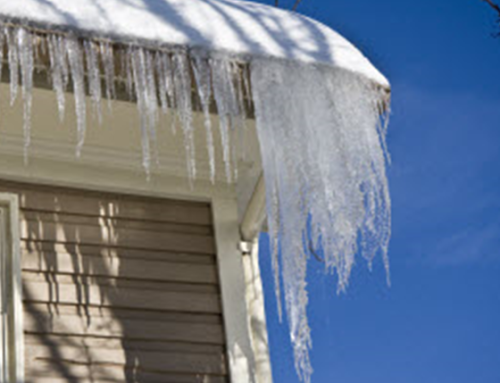This article was published by safewise on March 18, 2022. It was written by Katie McEntire. The original post can be found here.
After hibernating all winter, the first hint of warm air is the best way to wake up. But the coming of spring isn’t all birds and bees. Allergies, pests, and afternoon yard work are just around the corner. Streamline your work with spring cleaning safety tips on cutting the clutter, disinfecting your home, safety testing, and emergency preparation.
Spring cleaning safety tips
1. Declutter and disinfect
Things tend to accumulate over the winter. Once spring rolls around, it’s time to take care of the left-out holiday decorations and piles of sweaters. Clutter can collect dust, which causes allergies. Here’s how to get started.
Clean out the attic or garage
It sounds like a daunting task, but spring is the perfect time to clear the dust off the storage areas of your home.
Start by untangling and sorting nests of cables and extension cords. You probably don’t need a dozen phone chargers anyway. For the ones you don’t want to keep, look for an e-waste recycling center near you. Chargers, cables, and cords can add to pollution and be hazardous when burned.
For everything else, create piles of things you want to dump, donate, or keep. This process thins out the clutter and uncovers items you forgot you loved.
Restock cleaning supplies
Check under your sink and replace any old household cleaners and rags you don’t need. Items like unscented bleach, white vinegar, and fresh sponges are great additions to your home arsenal.
If you want gentler cleaning products, ingredients like olive oil, vinegar, and lemon juice combine to create nontoxic home cleaners. But you need to bring in the heavier chemicals like bleach to truly disinfect your home. If you use bleach, do not mix it with any other chemicals.
Clear the air
Cleaner air means fewer itchy eyes, runny noses, and sneezes in your home. Crank up the air purifier, vacuum, dust, and wash linens regularly to break up dirt, pollen, and dander.
Replace your HVAC air filter and clean the vents throughout your home to remove dust.
Household mold is also a prime suspect when it comes to spring allergies. If you come across moldy spots in your bathroom, under the sink, or around windows, clean them up quickly to avoid any further problems.
Disinfect your home
Between winter colds and spring allergies, there might be a lot of sneezing in your house. Keep the bugs under control by deep cleaning your home.
Start by disinfecting hard surfaces like countertops, doorknobs, faucets. Commonly touched areas like these should get a thorough cleaning to avoid spreading germs. Clean toys, games, and electronics too, especially ones your kids use often or share with siblings and friends.
We recommend using a bleach solution or nontoxic household cleaners like hydrogen peroxide when you can.
You don’t need much bleach to make a solution that will disinfect the hard surfaces in your home. But we recommend changing the recipe based on what you’re cleaning.1 Use gloves when handling bleach solutions, and be sure to open a window or vent. And NEVER mix bleach with ammonia or vinegar.
How To Make a Bleach Solution
Staying Clean During Quarantine
Here are a few tips for keeping your home clean to stay safe from COVID-19.2
- Wash your hands frequently with soap and warm water for at least 20 seconds, especially while cleaning a house where someone is already sick.
- Use EPA-approved cleaners, disinfecting wipes, or bleach solutions to clean hard surfaces. Wash sheets, towels, and linens after use with the warmest possible setting.
- If someone in your home has COVID-19, use disposable rubber gloves when handling items they’ve touched or used. Be sure to wash your hands after any contact.
- Follow common respiratory hygiene—cover your mouth with the crook of your elbow when coughing or sneezing, use a tissue to blow your nose, and dispose of it in a closed wastebasket.
- Get news and updates from reputable sources such as the Centers for Disease Control (CDC) and the World Health Organization (WHO).
2. Start yard work
You don’t have to be a gardener or hardcore DIY-expert to make your yard safer and more fun this spring. As the winter chill thaws away, there are a few things you can do to make sure your home is in good shape for spring and summer.
Clean the gutters
Your gutters and roof may have weathered some damage after a season of snow and ice (check out our winter safety guide). Even if you live in a warmer climate, your home’s drainage system could have clogs from leaves or sticks. Wash out all the debris and unclog your drains and downspouts to make room for the coming spring showers.
Start some planting
Even novice gardeners can get started on their yards in spring. Early spring is the best time to plan your flower and vegetable gardens. With the warm weather, you can till soil, plant bulbs and seeds, and weed any growth that started over the winter.
Prepare for pests
You aren’t the only one coming out of hibernation in spring. As the weather warms up, pests become more active. Thankfully, there are a few ways to keep the bugs at bay.
- Seal and stain the boards on your deck or porch if you have one. Wood treatment can help keep pests from making your deck dinner.
- Check any window and door screens for tears or loose ends that mosquitos, flies, or beetles could use to get inside.
- Remove any standing water in your yard or garden too. Pests lay eggs in stagnant water. Birdbaths, buckets, and puddles are prime real estate for mama mosquitos.
Check the sprinklers
Before you know it, warm weather will turn hot, and your lawn may suffer for it. Get a head start by checking your sprinkler system or installing sprinkler heads throughout your property. Run a few tests on warm days to make sure you’re ready for summer.
3. Test home safety alarms
It only takes a few minutes to test your home safety sensors. The beeping might be annoying. But making sure they work could save your life in an emergency.
Test smoke, fire, and carbon monoxide alarms
Start by asking for help from a partner, child, or roommate. Tell them to find the furthest possible room in your home and wait for the alarm to sound. Next, hold down the button on your smoke or CO detector down until the alarm sounds.
Your assistant should be able to hear the alarm from their post. If they can’t hear the alarm go off, you should change the battery or place an additional device in your home.
New Detectors Every Decade: We recommend replacing your smoke and CO detectors once every 10 years. Today’s models are much more advanced too. Products like the Best Fire and Smoke Alarms and Best Carbon Monoxide Detectors.
Check fire extinguisher
Love to cook? Be sure there’s a fire extinguisher nearby. Even experienced chefs need to be prepared for unexpected fires.
We also recommend testing your fire extinguisher or purchasing one if you don’t already have one. Show anyone in your home who cooks how to use it in case of a fire. Check out our reviews on the best fire extinguishers to learn more.
Install a water leak detector
Check out the best water leak detectors to learn more.
4. Make an emergency plan
While it isn’t much fun to think about, creating a safety plan for a natural disaster, pandemic, or other emergency is the responsible thing to do. With just a day or two of planning, you can be prepared for the worst.
Create a fire drill
Sit down with your family and establish a plan for escaping your home in a fire. Establish two routes out of every room in your home, as well as alternatives for anyone with a disability. Choose a rendezvous spot to meet up once everyone’s out. We also recommend setting two meeting places where your family can meet if you’re separated.
Once you’ve run through the plan with everyone, practice until everyone understands what to do.
Gather an emergency preparedness kit
Start by gathering supplies for an emergency preparedness kit, planning an evacuation route, and establishing emergency contacts. Clothes, food rations, and water are essential, but don’t forget items like pet food or medications.
Sources
- Division of Public Health Services, “How to Properly Make and Use Sanitizers & Disinfectants” September 2011. Accessed March 18, 2022.
- Centers for Disease Control, “How to Protect Yourself and Others” Last updated November 2020. Accessed March 18, 2022.
- Ready.gov, “Build a Kit”. Last updated November 2020. Accessed March 18, 2022.\
Disclaimer
Product prices and availability are accurate as of post date and are subject to change. Any price and availability information displayed on Amazon at the time of purchase will apply to the purchase of this product. Safewise.com utilizes paid Amazon links. Certain content that appears on this site comes from Amazon. This content is provided “as is” and is subject to change or removal at any time.



